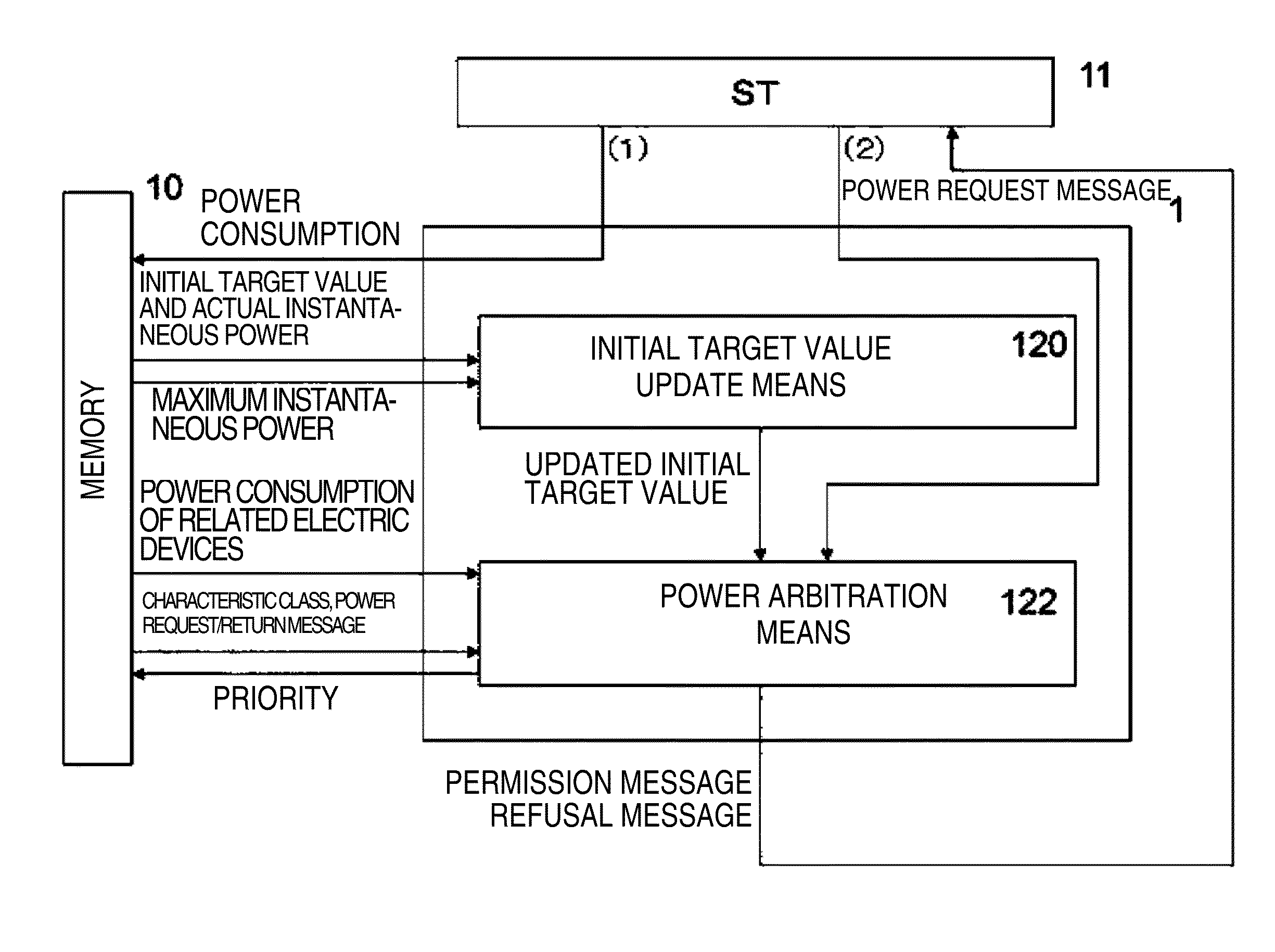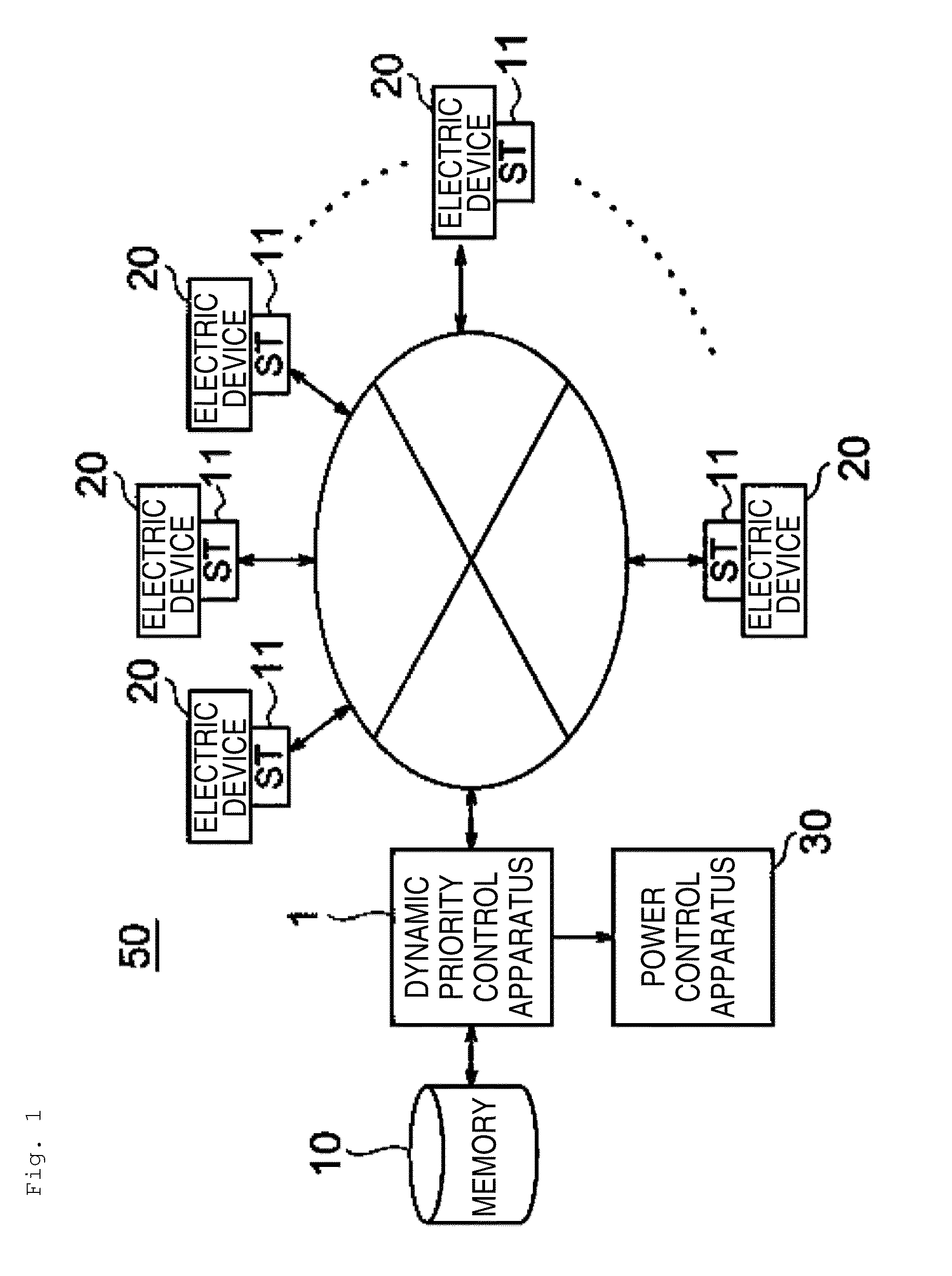On-demand multiple power source management system, on-demand multiple power source management system program, and computer-readable recording medium recording the program
a technology of power source management system and management system, which is applied in the integration of power network operation system, data processing applications, process and machine control, etc., can solve the problems of large amount of data for calculating and processing power supply and capacity, inability to control power supply in real time in response, and inability to achieve the effect of reducing the quality of life of users
- Summary
- Abstract
- Description
- Claims
- Application Information
AI Technical Summary
Benefits of technology
Problems solved by technology
Method used
Image
Examples
first embodiment
[0123]FIG. 8 is a functional block diagram of a first embodiment showing functions included in the priority apparatus shown in FIG. 1.
[0124]Reference sign 1 of FIG. 8 denotes a priority apparatus, reference sign 10 denotes a memory of the priority apparatus, reference sign 11 denotes an ST, and the priority apparatus includes initial target value update means 120 and power arbitration means 122. Reference sign (1) denotes power consumption transmitted from the ST. Before the operation of the priority apparatus, the priority apparatus executes preprocessing to convert the power consumption to a power use plan for setting the use power at each minimum control interval τ and stores the power use plan, the instantaneous power of the initial target value, and the maximum instantaneous power in the memory 10. Reference sign (2) denotes a power request message transmitted from the ST, and the power request message is transmitted to the power arbitration means 122.
[0125]The initial target v...
second embodiment
[0175]The priority apparatus 1 can ultimately control the instantaneous power equal to or below the maximum instantaneous power and can control the power to satisfy the target value C of the accumulated power. However, when a device is used, there may be an unexpected increase in the instantaneous power due to load fluctuation or the like, and the power may exceed the maximum instantaneous power. A second embodiment for handling such a case will be described.
[0176]FIG. 16 is a functional block diagram explaining functions included in a multiple power source management apparatus, and FIG. 17 is a functional block diagram of the second embodiment.
[0177]The priority apparatus includes the initial target value update means 120, power arbitration means 122, and constant monitoring means 124.
[0178]The initial target value update means 120 and the power arbitration means 122 have the same functions as the means described above, and the description will not be repeated.
[0179]The constant mo...
PUM
 Login to View More
Login to View More Abstract
Description
Claims
Application Information
 Login to View More
Login to View More - R&D
- Intellectual Property
- Life Sciences
- Materials
- Tech Scout
- Unparalleled Data Quality
- Higher Quality Content
- 60% Fewer Hallucinations
Browse by: Latest US Patents, China's latest patents, Technical Efficacy Thesaurus, Application Domain, Technology Topic, Popular Technical Reports.
© 2025 PatSnap. All rights reserved.Legal|Privacy policy|Modern Slavery Act Transparency Statement|Sitemap|About US| Contact US: help@patsnap.com



